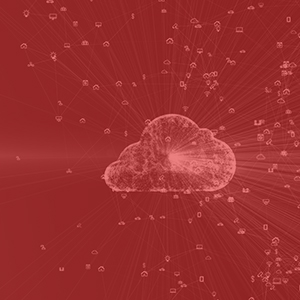No technology gets adopted overnight. On-premise environment provides full ownership, maintenance, responsibility. You pay for physical machines and virtualizations to meet your demands. Lately, such on-premise environments are less reliable, have a high total cost of ownership (TCO) creating frustration and a desire to alleviate this scenario.
If you or your company are facing such frustrations, it is time to act and think about cloud migration.
1. What is Cloud Migration?
Cloud environment contains virtualization platforms and application resources, required for company or business to run operations efficiently, which was previously on-premises.
Cloud Migration, according to Amazon Web Services, is the process of assessing, mobilizing, migrating, and modernizing your current infrastructure, application or process over to a cloud environment.
At Syntelli, while we believe the principles of cloud are standard across all platforms, we are proud to partner with Microsoft’s Azure, Amazon’s AWS and Google’s GCP.
2. How to plan a successful Cloud Migration?
“Do the hard jobs first. The easy jobs will take care of themselves.” – Dale Carnegie

Figure 1. General Cloud Migration Strategy
Phase One: Assess
- Identify and involve the stakeholders
Early engagement and support will lead to a smoother, faster migration process.
- Create a strategic plan
Establish objectives and priorities for migration. Identify major business events for the company, which may be affected by this transition.
- Calculate total cost of ownership
Very important step to estimate your potential savings.
- Discover and assess on-premise applications
Some cloud providers provide assessment tools but having a subject matter expert review these applications and resources help ease migration.
- Get support for your implementation
Syntelli Solutions to the rescue!!
- Train your team on cloud environments, applications, and resources
- Know your migration options
“Lift or Shift”, “Complete Refactor”, “Hybrid approach”
Phase Two: Mobilize & Migrate
- Migration governance
If you plan on migrating more than one application or service which could impact more than one team, then you need to plan your projects and track them in order to ensure success.
- Security, Risk and Compliance
You can evaluate your migration options by performing few tests. Use this opportunity to identify any scaling limitations, access control issues which may exist in your current application.
Document and review scenarios where several teams may interact with your applications on cloud. This tracing helps mitigate any dependencies and reduce potential impact.
- Pilot your migration with few workloads
Learn more about your new cloud environment by migrating low complexity workloads. It could be a simple migration of DEV database or testing a data pipeline required to build a modeling dataset for a data science model.
- Migrate the remaining applications
With successful migration and learning, you can complete your migration to the cloud.
- Decommission existing on-premises infrastructure
After successful migration, it is time to pull the plug on your existing on-prem systems. This reduces your overhead spent on maintaining your outdated infrastructure or application.
Phase 3: Run and Modernize
- Run and monitor
It is time to leverage the cool tools offered by your cloud provider to monitor your applications and track your resources, efficiency of your applications. Currently, the applications may be in a fragile state, so take care to review all the steps to track a successful migration.
- Timely upgrades
With the new infrastructure setup on cloud you can identify scopes for code and feature improvements, resource updates.
- Cloud Service Training
It is important to work with the customer and train their team members, until the team feels comfortable with the transition. Many questions still tend to linger after a successful migration.
3. Use Case: On-prem Data Science Model Migration to Cloud

Cloud Healthcheck – It’s about the data, stupid
As long as companies continue to think of the cloud simply as commodity compute and storage, the level of attention provided to securing this asset will be relegated down. Read More
Approach
Each cloud project migration varies from customer to customer. However, our customer’s goal was to migrate an existing data science model which made use of IBM SPSS Modeler.
The goal was to recreate and re-design existing data pipelines, de-couple dataset creations from data modeling and make the model production ready for various deployment demands.
Syntelli approached the migration process as depicted in the Figure 2 below.
The steps taken, are mentioned in the diagram as described in previous section.
Challenges
Each customer can decide to use cloud service provider of their choice. Options vary by cost, by infrastructure setup, compliance and security, and timeline to migrate.
In this case, the cloud service provider managed all the resources, and Syntelli leveraged the resources, and infrastructure. This service is generally termed as Infrastructure as A Service (IAAS).
Network and Connectivity
Network topology was the first challenge to overcome. Each company or customer has different levels of firewalls, packet filters and network hops. They can cause packet losses, slow transfer of data, to name a few.
Having a subject matter expert who can understand and test the connectivity to various resources like databases, virtual machines is very important. Technical scenarios like performing ping, traceroute tests and explaining these reports helped resolve many network barriers.
Security and Compliance
Next challenge was security, risk and compliance. Bigger business and organizations have a lot of applications and resources, which house Personally Identifiable Information (PII). At each point of the migration, Syntelli constantly worked with the IT Risk and Compliance team, IAAS cloud provider to make sure that the customer’s information was not compromised.
In this case, it was important to leverage security approaches like Active Directory, Kerberos for Big Data Environment, Single Sign-On option, Ranger, SSH Keys, two factor authentication, to name a few.
While, this can increase your migration timelines by few days, you will be more secure in the future.

Figure 2. On-Prem Data Science Model Migration Strategy
Success
Once the data science models were migrated successfully, the next steps were to document the migration and track all incidents which were resolved.
This not only helped the customer understand challenges, but as a consulting team, Syntelli learnt from the experience while still applying standard cloud practices.
Return on Investment (ROI) proved to be a huge success. The company saved thousands of dollars paid for propriety licensing of on-prem application. The migration helped cut costs, where only few users leveraged the application previously.
Another important point to note, the company did not have an in-house team to handle and monitor resources or use them. It was important for the Syntelli consulting team to guide them during this transition from coding, utilizing infrastructure, reporting, communicating with other teams across customer’s organization.
“Strive not to be a success, but rather to be of value.” – Albert Einstein
Currently, this company has grown in team size and technical capacity to scale their data science requirements and focus on creating improved models for their business in order to predict and forecast better results, track growth, and retention.
4. On-Prem vs Cloud Infrastructure
While cloud migration has helped reduce the customer’s stress on many topics, there is still room for inconsistencies or challenges ahead.
| Discussion Topic | On-Prem Application | Cloud Migrated Application | Migration Story |
| Cost | Expensive | Depends on subscription | Significantly reduced |
| Maintenance | Resources managed by the customer | Resources managed by cloud service provider | Less man hours |
| Application Interaction | High human interaction | Low human interaction | Reduced greatly |
| Open Source Libraries | Limited access to Data Science libraries | Ability to leverage open source libraries | Still a challenge of tracking open source library changes |
| Data Source Flexibility | Limited to certain formats | More options | Various formats from different sources leveraged |
| Scalability | Limited | Exponential | Access across various teams in the organization |
| Data Accessibility | Limited to one team | More teams interact | Access across organization |
| Security | More secured | Vulnerable | Security, Risk and Compliance team need to be more vigilant and audit at regular intervals |
| Application Downtime | Problem can be isolated to on-premise infrastructure or propriety application | Multiple points to trace | Leverage monitoring and tools and reports to avoid this scenario |
| ROI | Minimal | Significant Impact | Saved thousands of dollars spent on licenses, which benefited a few |
There are more topics, which can be part of the above table like SLA, resource upgrades, interoperability with other environments etc., but topics like infrastructure networking, data compliance, downtime, and support are some of the key points for successful cloud migration. It is important for a business or organization to have the key topics ironed out before migration. This helps alleviate some of the challenges.
5. Conclusion
We are currently in a state of uncertainty with recent spread of COVID-19 virus all over the world. We hope for this situation to ease and let individuals and all businesses resume their operations.
Some businesses have been able to sustain this impact, since most of their infrastructure is on cloud, and they are able to work and support communities during these worried times. We are uncertain, if our economy would have survived such an impact ten years ago.
Individuals and companies across world have accepted and adapted cloud computing. If you are on the fence, come talk to Syntelli. We can help you answer some of those questions and help you in the process.
“Intelligence is the ability to adapt to change.” – Stephen Hawking



